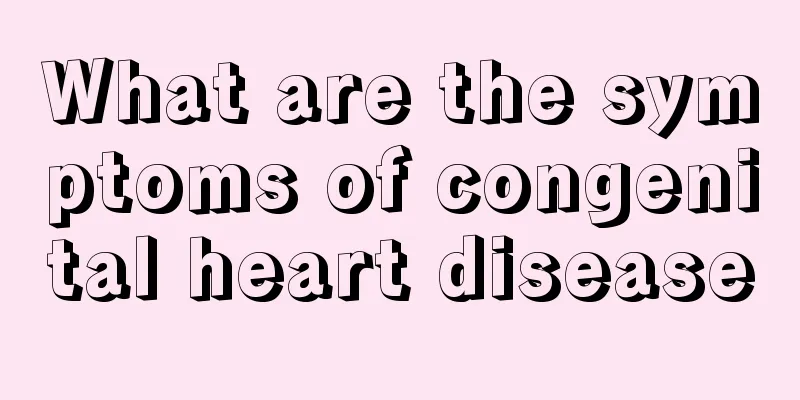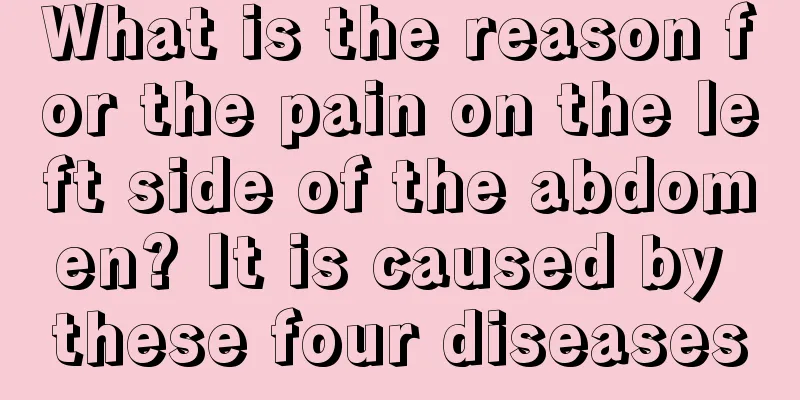What are the symptoms of congenital heart disease

|
Congenital heart disease is also known as congenital heart disease. It is a disease caused by multiple factors during the fetal period. When the patient is in a mild state, there are no symptoms and it will only be discovered during a physical examination. Generally, symptoms of this disease will appear in infancy. As the age increases, the symptoms will become more serious, which will cause serious consequences for the patient. Symptoms of congenital heart disease include: 1. Heart failure: Chest tightness, precordial pain, and palpitations are more obvious, especially after activities. The children are pale, short of breath, have difficulty breathing and tachycardia. The heart rate can reach 160-190 beats per minute and the blood pressure is often low. You can hear the rhythm of galloping horses. 2. Cyanosis: Purple coloration of the skin and mucous membranes can be seen at the tip of the nose, lips, nail beds, conjunctiva, etc. 3. Developmental delay and mental retardation: When cyanosis appears, the child will have slow growth and development, low intelligence, and may have difficulty breathing when feeding or crying. In severe cases, the child may lose consciousness and have convulsions. 4. Clubbing and polycythemia: Chronic hypoxia, metabolic disorders, and toxic injuries at the extremities. The soft tissue at the ends of fingers or toes proliferates, thickens, and becomes clubbed, and the nails are excessively curved in both vertical and horizontal dimensions like a parrot's beak. This is caused by chronic hypoxia. 5. Squatting: When infants and young children are held, their legs do not straighten, but prefer to bend them on the adult's abdomen. When they sit, they like to lift their feet onto a stool, and when they stand, their lower limbs remain bent. When older children walk, they often feel a lack of oxygen to the brain, so they squat down with their knees close to their chest to rest for a while. This is medically known as the squat phenomenon. 6. Others: Chest pain, syncope, sudden death. Some people have symptoms related to systemic circulation, such as abnormal sweating, which far exceeds the normal amount. |
<<: What are the methods for regulating symptoms of low blood sugar?
>>: How to treat headache and insomnia
Recommend
When caring for a woman who has undergone a cesarean section, keep these in mind!
Everyone knows that after a cesarean section, the...
How to treat purpuric nephropathy?
The harm caused by purpuric nephritis is relative...
Who are the people who are prone to papillary thyroid cancer? These 4 types of people must pay attention to it
People who are prone to papillary thyroid cancer ...
Can codeine phosphate tablets treat advanced lung cancer? How to care for lung cancer patients?
Lung cancer is one of the malignant tumors that p...
The best treatment for pituitary tumors
Pituitary tumor is a tumor that grows in the brai...
Furazolidone can kill Pylori
The drug furazolidone has certain antibacterial a...
What are the specific drugs for coccidia
Coccidia is actually a parasite that often appear...
How many raisins should I eat every day
Raisins are a snack that many girls like to eat. ...
Should I care about thyroid cancer? What is the treatment for thyroid cancer?
Thyroid cancer is a malignant tumor that originat...
What vegetables are easy to cause spots
I don’t know if you have noticed that there are m...
Can't sleep because of the snoring
When you can't sleep because of loud snoring,...
Learn to activate longevity genes by fasting
Studies have found that the human body has a &quo...
Why do I often feel dizzy when I wake up in the morning?
If you often feel dizzy when you wake up in the m...
Is there only one ovulation day?
The ovulation period lasts more than one day, but...
What are the specific treatments for bone cancer
With the progress of the times, people's livi...









